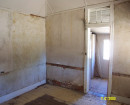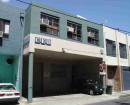Back to search results
Old Telegraph Office
83a Ryrie Street,, GEELONG VIC 3220 - Property No B0257
Old Telegraph Office
83a Ryrie Street,, GEELONG VIC 3220 - Property No B0257
All information on this page is maintained by National Trust.
Click below for their website and contact details.
National Trust
-
Add to tour
You must log in to do that.
-
Share
-
Shortlist place
You must log in to do that.
- Download report

B0257 Old Telegraph Office

On this page:
Statement of Significance
What is significant? The former Telegraph Station in Geelong was built in 1857-8 by builders Patterson and Bell, after the telegraph line between Melbourne and Geelong was constructed in 1854-5. It was the centre of communications for Geelong and district for many years. The building replaced two earlier telegraph stations, the first being a portable building, the second a brick office in McKillop Street, with business transferred to the building in Ryrie Street in July 1858. It is highly probable that Henry Ginn, the Colonial architect for Victoria from 1851 to 1853, designed this building, although it was not erected until four years after his departure from the Colonial Service. At the suggestion of the Harbour Trust, a time ball was erected on the telegraph station tower in 1862. The time signal was received from Melbourne on the electric telegraph and relayed to the people of Geelong, including shipmasters, by the releasing of a ball at 1pm daily (except Sundays). This has since been removed.
In 1870 the telegraph business was amalgamated with the post office and the telegraph building was handed over to the postmaster for use as a residence. It was used for this purpose until 1881.
Built of Barrabool freestone, the Old Telegraph Station is a single storey building of simple Georgian design. The symmetrical front facade with parapeted slate hip roof, is dominated by a centrally located square tower with pedimented window and crowning bracketed cornice. The smooth, large stonework of the front facade contrasts with the rough textured, smaller stone courses of the side walls. Vermiculated quoining emphasises the corners of the lower front facade, while smooth quoining surrounds openings and corners of the upper tower.
How is it significant? The Former Telegraph Station is of architectural and historical significance to the State of Victoria.
Why is it significant? The Former Telegraph Station is of architectural significance as one of the first buildings in Victoria to be constructed of Barrabool freestone and is an excellent example of early masonry construction in Victoria. It is also of significance as a probable outstanding example of the work of important colonial architect, Henry Ginn.
The Former Telegraph Station is of historical significance as an important centre of communications in early Geelong and district. An early building distinctively proportioned and carefully detailed - an example of the freestone buildings of the district.
Adapted from V H R Citation: 12/03/2014
Classified: 'Regional' 27/11/1958
Revised: 11/12/1969
In 1870 the telegraph business was amalgamated with the post office and the telegraph building was handed over to the postmaster for use as a residence. It was used for this purpose until 1881.
Built of Barrabool freestone, the Old Telegraph Station is a single storey building of simple Georgian design. The symmetrical front facade with parapeted slate hip roof, is dominated by a centrally located square tower with pedimented window and crowning bracketed cornice. The smooth, large stonework of the front facade contrasts with the rough textured, smaller stone courses of the side walls. Vermiculated quoining emphasises the corners of the lower front facade, while smooth quoining surrounds openings and corners of the upper tower.
How is it significant? The Former Telegraph Station is of architectural and historical significance to the State of Victoria.
Why is it significant? The Former Telegraph Station is of architectural significance as one of the first buildings in Victoria to be constructed of Barrabool freestone and is an excellent example of early masonry construction in Victoria. It is also of significance as a probable outstanding example of the work of important colonial architect, Henry Ginn.
The Former Telegraph Station is of historical significance as an important centre of communications in early Geelong and district. An early building distinctively proportioned and carefully detailed - an example of the freestone buildings of the district.
Adapted from V H R Citation: 12/03/2014
Classified: 'Regional' 27/11/1958
Revised: 11/12/1969
Show more
Show less
-
-
-
-
FORMER GEELONG WOOL EXCHANGE
 Victorian Heritage Register H0622
Victorian Heritage Register H0622 -
FORMER SCOTTISH CHIEFS HOTEL
 Victorian Heritage Register H0662
Victorian Heritage Register H0662 -
GEELONG TOWN HALL
 Victorian Heritage Register H0184
Victorian Heritage Register H0184
-
-









